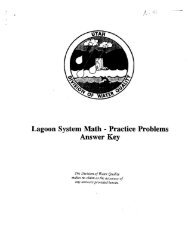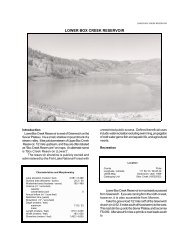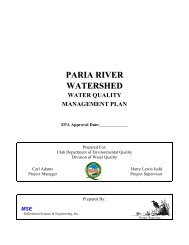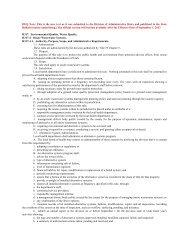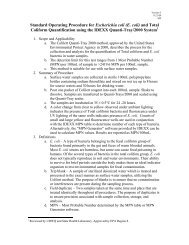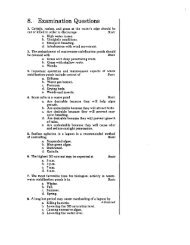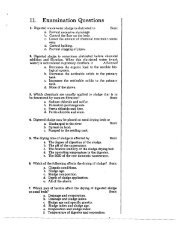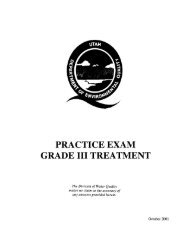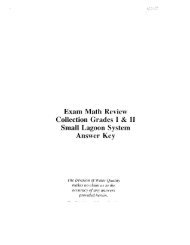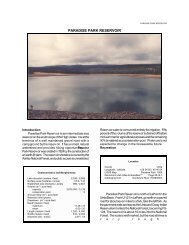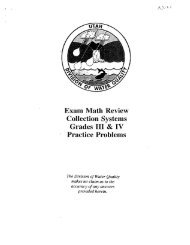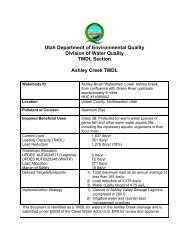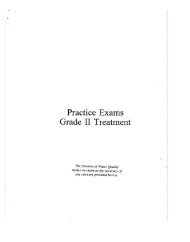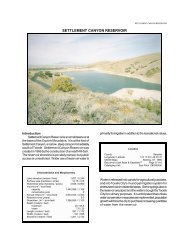Aquifer Recharge, Storage, and Recovery - Southwest Hydrology ...
Aquifer Recharge, Storage, and Recovery - Southwest Hydrology ...
Aquifer Recharge, Storage, and Recovery - Southwest Hydrology ...
- No tags were found...
You also want an ePaper? Increase the reach of your titles
YUMPU automatically turns print PDFs into web optimized ePapers that Google loves.
ASR <strong>and</strong> the “Big Picture”Cat Shrier – Watercat Consulting LLCHundreds of water providersthroughout the United Statesare already using some formof well or surface recharge for managedunderground storage (MUS, calledaquifer storage <strong>and</strong> recovery [ASR] inthis publication) as an integral part oftheir water supply management. TheCongressional Water Caucus recentlyidentified “groundwater banking” asa priority for U.S. water policy.Yet as a 2008 National Research Council(NRC) report reveals, little quantifiable,reliable information is available regardingtotal amounts of water stored underground,subsurface storage locations, or availablestorage. Nor are there widely acceptedmetrics for assessing storage suitability,economic <strong>and</strong> financial costs <strong>and</strong> benefitsof ASR, or ways to compare <strong>and</strong> combinesurface <strong>and</strong> subsurface storage alternativesfor conjunctive (joint groundwater <strong>and</strong>surface-water) management. This lackof information, along with inconsistentregulatory guidance, creates challengesfor individual providers consideringASR, but is also a problem for plannersconsidering the bigger picture: How can weapply <strong>and</strong> integrate ASR into conjunctivewater management to address regional<strong>and</strong> national or federal priorities?On March 19, 2008, NRC hosted aforum in Washington, D.C., to discussinstitutional issues of managed undergroundstorage such as science- <strong>and</strong> risk-basedASR policy <strong>and</strong> regulations for watersupply <strong>and</strong> protection of health <strong>and</strong> theenvironment; <strong>and</strong> monitoring, management,<strong>and</strong> planning. Held in partnership withthe Ground Water Protection Council,National Ground Water Association, <strong>and</strong>Groundwater Resources Association ofCalifornia, the forum attracted speakers<strong>and</strong> participants from more than 25 states<strong>and</strong> three federal agencies. Some points<strong>and</strong> questions raised at the forum follow.Public <strong>and</strong> Policy Maker EducationEducation was widely recognized as acritical component for ASR to be perceived20 • May/June 2008 • <strong>Southwest</strong> <strong>Hydrology</strong><strong>and</strong> accepted as a mainstream tool forwater management. The <strong>Southwest</strong> hasgenerally higher water knowledge thanother regions, <strong>and</strong> most western stateshave ASR-specific permitting regulations.However, nationally <strong>and</strong> federally,the concepts, challenges, <strong>and</strong> benefitsassociated with ASR have been poorlycommunicated to policy makers <strong>and</strong> thepublic, making it hard to gain public trust.Efforts to address policy <strong>and</strong> managementaspects often become bogged downover technical details <strong>and</strong> debatesover terminology—such as whetherto use “ASR” or “MUS”—or derailedby characterizations of ASR as anexperimental <strong>and</strong> untested technology inspite of its widespread use. Many watermanagers discount ASR, saying “Weuse surface water, not groundwater.”Groundwater organizations have takenthe lead on organizing ASR symposia<strong>and</strong> developing educational materials—but since most ASR system suppliesare surface water, is ASR really just agroundwater issue? Policy makers <strong>and</strong>the public usually underst<strong>and</strong> water onlyin surface-water terms. What metrics <strong>and</strong>educational tools could help translateASR benefits <strong>and</strong> constraints into termsthat fit a surface-water paradigm?UIC <strong>and</strong> Groundwater ProtectionThe biggest direct federal involvement inASR comes from the U.S. EnvironmentalProtection Agency’s UndergroundInjection Control (UIC) program. ASRwells are “Class V” wells, a catch-allcategory mainly for permitting wastedisposal. UIC is implemented by statesif EPA grants them primary enforcementresponsibility, or by regional EPA offices.EPA headquarters is completing an internalreview on how ASR works, but has notprovided states or regional agencies withguidance on UIC interpretation, resultingin inconsistent permitting approaches.UIC-related questions raised in the NRCreport <strong>and</strong> forum include: 1) Do residencetimerequirements reflect site-specificconditions for different constituents? 2) Arestate interpretations of “antidegredation”preventing ASR development in caseswhere the risk is remote of impactingother groundwater users pumping froman underground source of drinking water<strong>and</strong> where the benefits to the watersupply—<strong>and</strong> even water quality—are high?3) Do primary drinking water st<strong>and</strong>ardsneed to be met at the wellhead or at theedge of a limited zone of conditioning?State agencies, regional EPA staff, <strong>and</strong>water providers at the forum saw no needfor new regulations, <strong>and</strong> stressed thatpermit requirements must be specific tosite conditions, operations, <strong>and</strong> risk ofadverse interactions between the storedwater <strong>and</strong> water in the aquifer. However,they requested federal guidance formore consistent interpretation of UIC<strong>and</strong> funding to develop approachesfor ASR permit application review.Federal SupportWhile water supply issues are h<strong>and</strong>ledat the state level, federal agencies havelong been involved in ASR, from theU.S. Geological Survey’s post-WorldWar II groundwater recharge studiesto the U.S. Bureau of Reclamation’sGround Water <strong>Recharge</strong> DemonstrationProjects of the 1980s, a major catalyst forwestern ASR development. The proposedSECURE Water Act would increase theactivities of USGS <strong>and</strong> Reclamationrelated to water resources data <strong>and</strong> wateravailability, including groundwater. Willthese studies consider use of aquifers notjust as groundwater reserves but also aspotential underground storage zones?The U.S. Army Corps of Engineers’(Corps) Water Resources Principles& Guidelines (P&G), which providest<strong>and</strong>ards for evaluating water resourcesmanagement alternatives <strong>and</strong> planning,are being reviewed <strong>and</strong> updated (see page8). Colorado, Utah, <strong>and</strong> Oregon havedeveloped metrics for evaluating potentialunderground storage areas, as has the



